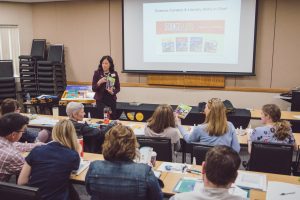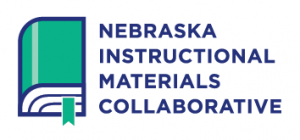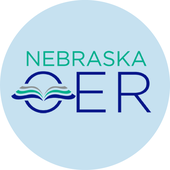 Every day, in classrooms all across the state, students are opening textbooks, logging on to computers, and completing worksheets. But where do all of those materials come from? And how do we know the materials students are using to learn are actually teaching the right things?
Every day, in classrooms all across the state, students are opening textbooks, logging on to computers, and completing worksheets. But where do all of those materials come from? And how do we know the materials students are using to learn are actually teaching the right things?
 In Millard Public Schools, as in many Nebraska school districts, teachers are directly involved in the curriculum selection from the very beginning. Several teachers from each school form ambassador teams and over a span of several months perform a district needs assessment. Once they know the curriculum requirements, they start looking for vendors that will fit their needs. In today’s classroom that means a lot more than a set of textbooks.
In Millard Public Schools, as in many Nebraska school districts, teachers are directly involved in the curriculum selection from the very beginning. Several teachers from each school form ambassador teams and over a span of several months perform a district needs assessment. Once they know the curriculum requirements, they start looking for vendors that will fit their needs. In today’s classroom that means a lot more than a set of textbooks.
“Now that we are in the digital age and we are a one-to-one district, which is key, we are looking at a number of resources that are not only available online as free and open, but we are looking at the quality of the digital platform as well as the printed product,” says Curriculum and Instruction Facilitator Dr. Amy Himes.
 Dr. Himes has been through this process many times before and in many ways. She says the use of teacher ambassadors sets Millard apart and is crucial to picking the right curriculum for the district.
Dr. Himes has been through this process many times before and in many ways. She says the use of teacher ambassadors sets Millard apart and is crucial to picking the right curriculum for the district.
“I was in a classroom myself for 26 years,” says Dr. Himes. “It’s dangerous for people too-far removed from the classroom to be making decisions about what directly impacts children. We need the big picture in place but when it comes down to it, it’s all about what the teacher does to engage students to make it meaningful. If it’s not happening in the classroom, it’s just not happening.”
 The teachers who are on the ambassador teams agree. Although they spend extra time doing their homework on materials on top of their normal teaching day, it’s worth the extra effort to find something that will work in their classroom.
The teachers who are on the ambassador teams agree. Although they spend extra time doing their homework on materials on top of their normal teaching day, it’s worth the extra effort to find something that will work in their classroom.
“It’s great to look at the resources ahead of time from both a teacher perspective and a student perspective,” said eighth grade science teacher Nichole Schwab. “We are making sure we’re meeting students needs and pushing them to the next level so we can create learners that are critical thinkers, ready for the world ahead of them.”
“We want students engaged and exploring,” said seventh grade teacher Ted Stocking. “We want them to take control of their own learning. That is what is so rewarding for students and teachers. Being a part of these decisions helps us find the materials that will allow us to do that in the classroom.”

After months of work and meetings with vendors, the ambassadors pass on their recommendations to Millard Public Schools administration. From there, Millard’s school board makes the final decision, one informed directly by teachers.
The Nebraska Department of Education believes every Nebraska student deserves the opportunity to learn from high-quality, standards-aligned instructional materials to prepare for success in college, career, and civic life.

The Nebraska Instructional Materials Collaborative (NIMC) helps districts by highlighting high-quality, standards-aligned instructional materials and creates opportunities for aligned professional development that ensures teachers are able to use the materials effectively.
 Nebraska is also furthering its commitment to equitable access to free and open educational resources and services with the Nebraska OER Hub, a collaboration between the Educational Service Unit Coordinating Council and the Nebraska Department of Education.
Nebraska is also furthering its commitment to equitable access to free and open educational resources and services with the Nebraska OER Hub, a collaboration between the Educational Service Unit Coordinating Council and the Nebraska Department of Education.


